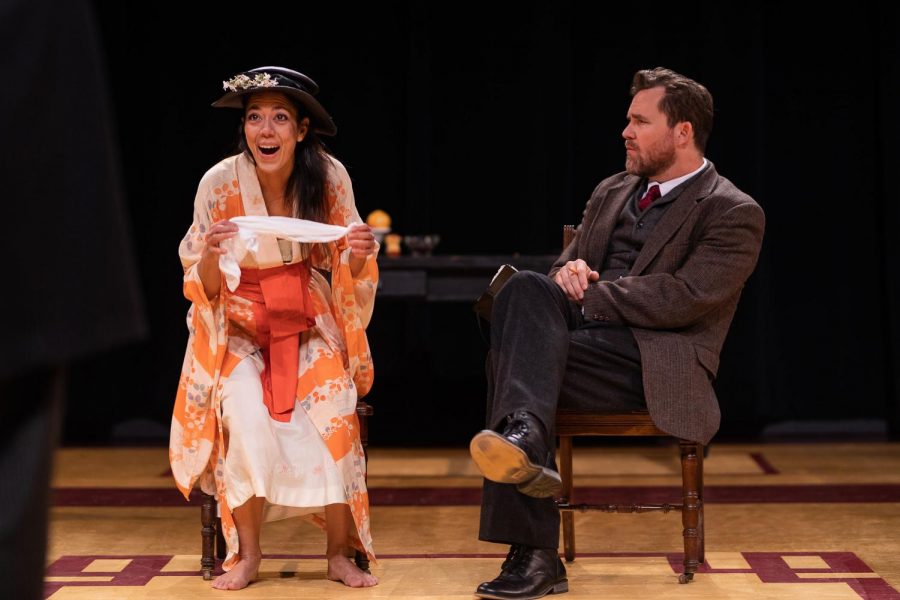Review: The 21st century version of ‘My Fair Lady’ empowers audiences
Photo courtesy Nile Scott Studios, Bedlam
Vaishnavi Sharma and Eric Tucker perform in theater company Bedlam’s production of “Pygmalion.”
February 13, 2019
Anyone entering the Central Square Theater to see Bedlam’s “Pygmalion” with expectations of Audrey Hepburn and Rex Harrison singing and walking off into the sunshine together is in for a surprise.
“Pygmalion” is the original play by George Bernard Shaw that was adapted into the movie and musical “My Fair Lady.” The shows contain the same basic storyline: A poor girl named Eliza Doolittle selling flowers on the street falls into the hands of a linguist, Henry Higgins, who decides to teach her how to be a lady in high society. The endings, however, could not be more different.
The play is named for the ancient Greek character Pygmalion who, according to myth, made a sculpture of his ideal woman. He then fell in love with his creation, which eventually came to life.
According to its website, the theater company Bedlam emphasizes “the immediacy of the relationship between the actor and the audience.” Its interpretation of “Pygmalion” manipulates the production as an interactive experience, giving the audience a deeper connection to the characters and the performance as a whole.
The show opens in an atypical manner, with cast members and stage crew asking audience members to join them onstage and mill about to “fill the space.” Then, in flash mob style, the actors begin their performance, still surrounded by the surprised audience.
The company also provides an interesting interpretation of the story for those accustomed to the Hollywood version. Missing from the performance are some of the iconic scenes — Doolittle studying language and fooling the upper class into thinking she is one of them at a party, not to mention returning to Higgins in the end.
These omissions suggest that the important part of the story is the relationship unfolding between Doolittle and Higgins. This telling centers around Doolittle’s internal development, not her superficial external development.
Bedlam replaces these scenes with ones that convey Doolittle’s transformation. In the middle of the show, Vaishnavi Sharma as Doolittle performs a solo scene putting on a dress. Soft, dramatic music plays as she changes, her outer metamorphosis mirroring the inner. Scenes like this allow the audience to gain a deeper understanding of her development.
In Shaw’s original story, Doolittle displays her independence at the end of the show. She may be in love with Higgins, but she isn’t going to run back to him if he isn’t willing to treat her the way she knows she deserves. He claims that she shouldn’t be upset because he treats her the same way he treats everyone else — but Doolittle, a strong, intelligent woman, knows that someone who truly cared about her wouldn’t be so selfish.
In 1914, when “Pygmalion” first opened, audiences weren’t quite ready for this level of female independence. A woman didn’t even have the right to vote, so why should she have the right to leave the man who loved her — even if he didn’t treat her well?
In 2019, it’s a different story. As wholesome and fulfilling as a fairytale ending can be, this show brings something more: empowerment. It acknowledges the fact that a woman does not need to crawl back to someone who tells her he won’t change for her, who won’t even admit he loves her. She is completely free from any obligation to fix him or love him despite his flaws. In the end, Doolittle walks off into the sunshine all by herself.
“Pygmalion” is at the Central Square Theater in Cambridge through March 3.







